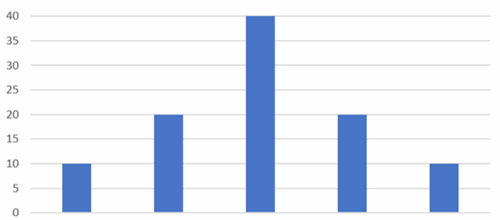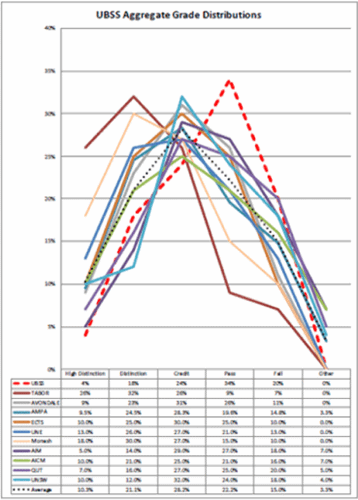
Grade Moderation Process
Assessment moderation in the Higher Education (HE) sector is regarded as an important element of provision. All institutions should have in place a benchmarked and suitable policy. UBSS has in place a well thought through overview as evidenced in the Assessment Moderation Policy (v14), available on the public website.
Given the fact that we now deliver product across three sites and we are likely to see considerable growth over the next two to three years in student enrolments we will commence using the standard university bell curve (normal distribution) system with reference to our results. For more insight see: Bell Curve Definition: Normal Distribution Meaning Example in Finance, Investopedia.
The model (which I oversaw for many years at Griffith University, Central Queensland University and Western Sydney University) is based on a moderation practice of allocating a percentage to grade distribution (not marks) prior to the release of grades.
The model used extensively across the world – (as further evidenced this week in Vietnam – July/August 2023 – benchmarking with colleagues) is based on the bell curve (because it resembles a bell shape) of:
- HD – 10%
- D – 20%
- C – 40%
- P – 20%
- F – 10%

This means the UBSS Grade Review Committee on receipt of marks would allocate grades accordingly – marks within each category may vary (and usually do) from trimester to trimester.
Looking at the most recent grade distribution at UBSS in T1, 2023:
| Grade | Undergraduate | Postgraduate | UBSS |
|---|---|---|---|
| HD | 6% | 6% | 6% |
| D | 18% | 20% | 19% |
| C | 27% | 27% | 27% |
| P | 27% | 28% | 28% |
| F | 22% | 19% | 20% |
This would mean an adjustment would be required:
- HD – up by 4%
- D – up by 1%
- C – up by 13%
- P – down by 8% (compensated by lift to credit)
- F – down by 10%
There is no intention of changing marks – this is both unethical and disrespectful – what it means though, as a School, we are ensuring a proper balance of results in line with current university and higher education provider best practice.
This has required a timely review of the existing assessment moderation policy – this has now been done.
Using our benchmarking data (refreshed each trimester) it was obvious that we were slightly out of sync with partners as demonstrated with our ‘lean to the right’ (PASS grade) so to speak – UBSS is represented with the broken line:

Part of the maturation of any HE organisation is a clear understanding that academic quality and integrity is assured and students – in particular – are being supported in a fair and equitable manner.
It is essential that UBSS remains compliant at all times and acknowledges best practice across the sector. See The yellow line and the giraffe – a cautionary tale of compliance.
 Emeritus Professor Greg Whateley is the Deputy Vice Chancellor and Chief Executive Officer at Group Colleges Australia.
Emeritus Professor Greg Whateley is the Deputy Vice Chancellor and Chief Executive Officer at Group Colleges Australia.






